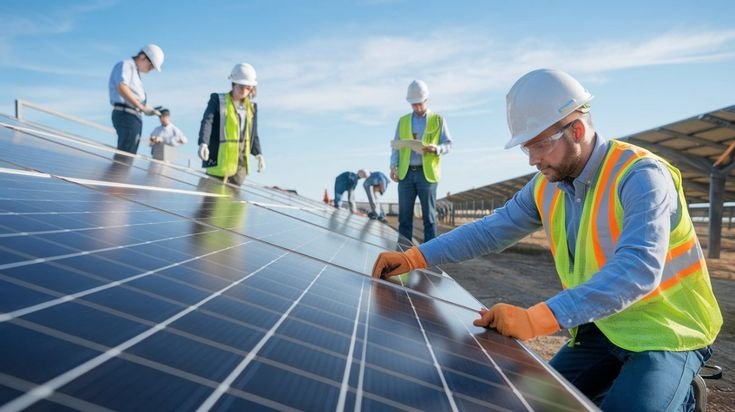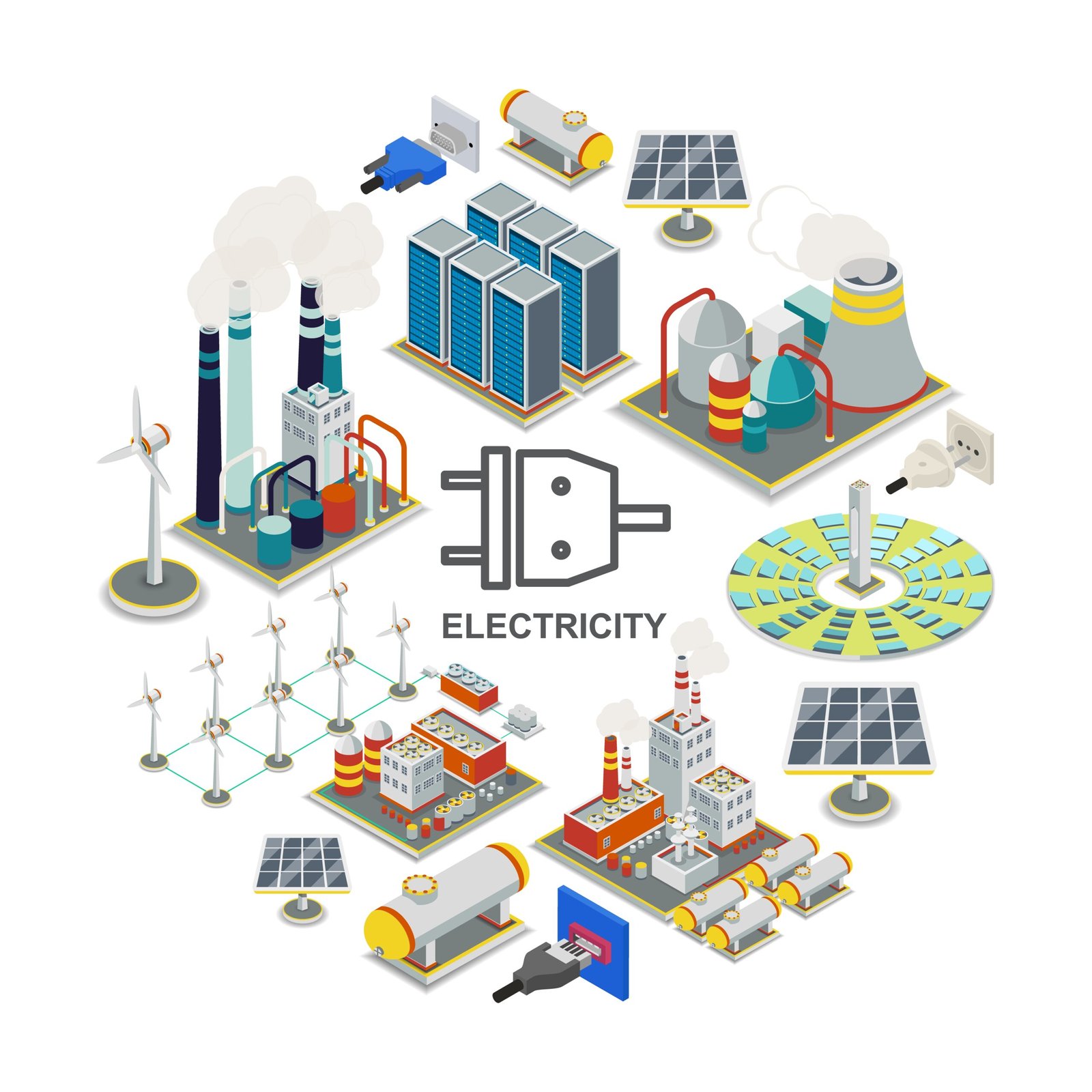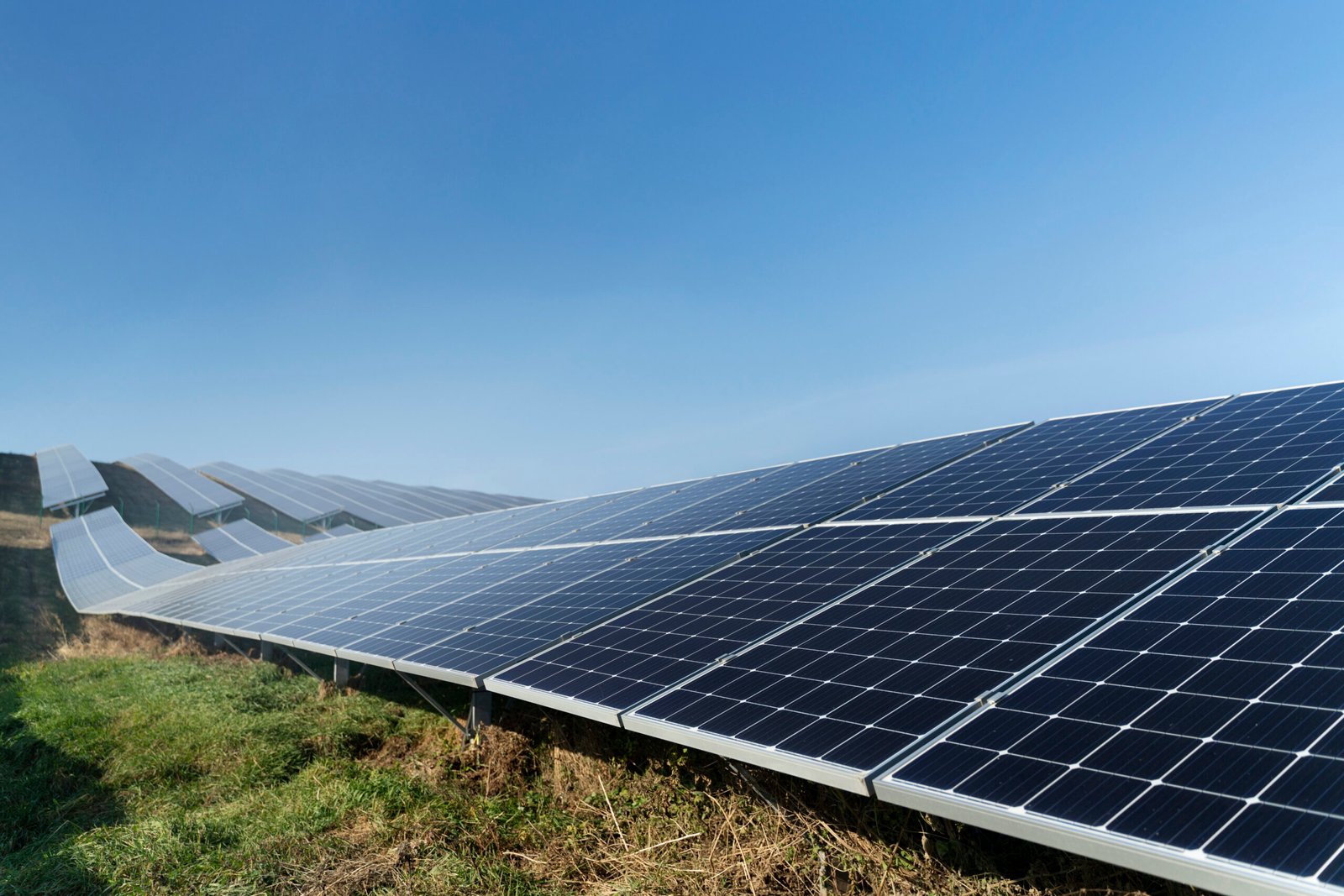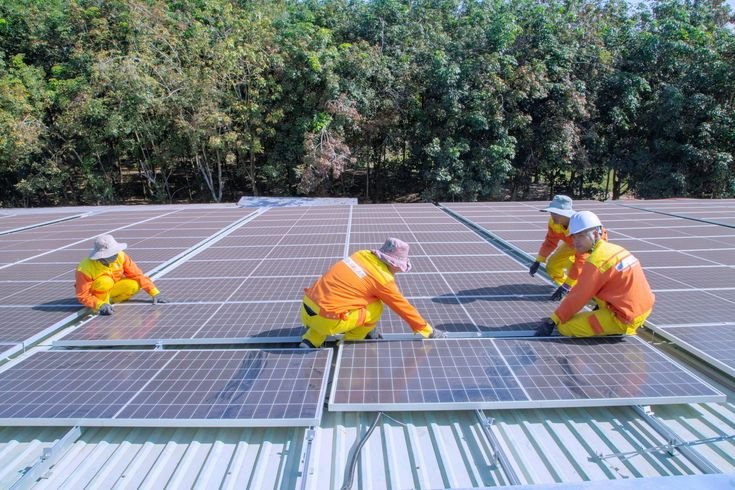India is rapidly positioning itself as a global leader in renewable energy, particularly solar power. With abundant sunlight, ambitious government policies, and increasing technological advancements, the future of solar energy in India looks extremely promising. This article explores the prospects for solar energy in India, focusing on government initiatives, technological innovations, challenges, and the economic and environmental benefits of scaling up solar power.
Table of Contents
Current Landscape of Solar Energy in India
India’s solar energy sector has witnessed exponential growth in the last decade, positioning itself as one of the top solar markets globally. As of 2023, the country’s installed solar capacity stands at over 70 GW, a remarkable leap from just 2.6 GW in 2014. The National Solar Mission, launched in 2010, aimed to make India a global leader in solar power by encouraging investment in solar projects.
At Soleos Solar Private Limited, we are proud to contribute to this solar revolution, helping homes and businesses across India transition to cleaner, renewable energy sources. With the rising cost of conventional energy and the push for sustainability, the future of solar energy in India seems even brighter.
Today, India ranks among the top five countries in terms of installed solar capacity. The future of solar energy in India is set to flourish, with a strong push from both the government and the private sector. Solar power is expected to play a pivotal role in India’s energy mix as the country moves toward its goal of achieving net-zero emissions by 2070.
Government Policies Driving Growth
The Indian government has been instrumental in driving the future of solar energy sector. Various incentives, including subsidies, tax benefits, and grid connectivity for solar projects, have created a favorable environment for solar power development.
The Pradhan Mantri Kisan Urja Suraksha evam Utthaan Mahabhiyan (PM-KUSUM) scheme has been vital in promoting decentralized solar power generation, enabling farmers to install solar pumps for irrigation, further reducing reliance on conventional grid electricity.
The Renewable Purchase Obligation mandates that distribution companies must source a certain percentage of their total power from renewable sources, including solar energy. This policy helps drive demand for solar power and supports the long-term growth of the sector.
Solar Park Schemes: The government has also promoted the development of solar parks across the country. These parks offer dedicated infrastructure for solar power generation, making it easier for developers to set up projects. Solar parks have significantly expanded India’s solar capacity and will continue to do so. One of the most prominent schemes introduced by the Indian government is the Solar Park Scheme. Almost ten years old now, the initiative aimed to speed up the process of establishing solar power projects by developers. The idea was to create large solar park areas with shared infrastructure facilities, including roads, water supply, drainage systems, and communication networks.
The initial goal was for 25 solar parks to be created by the end of 2019 with a combined installed capacity of 20,000 megawatts (MW). As of March 2017, things were going so well that this figure was doubled to 40,000 MW, with the expansion set to continue until 2026.
The government has introduced several groundbreaking policies to drive the growth of India’s solar sector—from international collaborative ventures such as the International Solar Alliance (ISA) to the PM Suryaghar Yojana (PMSY) electrifying 1 crore households and subsidising solar panel installations. The ISA is a joint effort between France and India, strengthening solar energy and enhancing energy access and security.
Further, the Solar Park Scheme envisions the development of 50 solar parks of 500 MW each by 2025-26. The Ministry of Renewable Energy (MNRE) launched schemes such as Production-Linked Incentives (PLI) and Approved List of Models and Manufacturers (ALMM) to reduce dependency on imported solar panels and boost domestic manufacturing.

10 Factors Driving the Future of Solar Energy in India
India’s solar energy sector is rapidly expanding, driven by several key factors that are shaping the future of this industry. As the country strives to meet its energy needs sustainably and reduce its carbon footprint, solar energy has emerged as a vital solution. Here are ten key factors that are propelling the future of solar energy in India:
1. Government Policies and Initiatives
Government support is one of the most critical drivers of the future of solar energy sector in India. Initiatives such as the National Solar Mission, which aims to achieve 100 GW of solar power capacity, have been pivotal in promoting the growth of solar energy. Additionally, incentives like solar subsidies, tax exemptions, and Renewable Purchase Obligations (RPOs) encourage both individuals and businesses to invest in solar power.
2. Declining Cost of Solar Panels
The cost of solar photovoltaic (PV) panels has significantly declined over the last decade due to improvements in manufacturing processes and economies of scale. This reduction in cost has made solar energy a more accessible and attractive option for businesses, industries, and households in India.
3. Technological Advancements in Solar Power
Continuous innovation in solar technologies is making solar power more efficient and reliable. Advancements in solar panel efficiency, energy storage solutions, and grid integration are driving down costs and increasing the reliability of solar power generation in India.
4. International Solar Alliance (ISA)
India’s leadership in forming the International Solar Alliance (ISA) has positioned the country as a global hub for solar energy collaboration. ISA aims to promote solar energy adoption in countries located between the Tropic of Cancer and the Tropic of Capricorn, which receive ample sunlight. This initiative has attracted international investment and technological support for India’s solar projects.
5. Rising Energy Demand
India’s growing population and expanding economy have led to a surge in energy demand. Solar energy presents a viable solution to meet this increasing demand, especially in rural areas where access to conventional electricity is limited. Solar power can bridge the energy access gap, ensuring that both urban and rural populations have reliable and affordable electricity.
6. Environmental Concerns and Climate Goals
India has committed to reducing its carbon emissions and increasing its reliance on renewable energy as part of its climate change goals. The country has set ambitious targets under the Paris Agreement, including achieving 40% of its total energy needs from renewable sources by 2030. Solar energy plays a critical role in meeting these environmental commitments.
7. Rural Electrification Programs
India’s rural electrification efforts have been a significant factor driving the growth of solar energy. Solar-powered mini-grids and rooftop solar installations have become a practical solution for providing electricity to remote and rural areas, where traditional grid infrastructure is either absent or unreliable.
8. Corporate and Industrial Adoption
India’s corporate and industrial sectors are increasingly embracing solar energy to reduce energy costs and meet sustainability goals. Large-scale solar power plants, along with commercial rooftop solar installations, are becoming a popular choice for businesses looking to decrease their carbon footprint and cut electricity expenses.
9. Solar Financing and Investment Opportunities
Access to affordable financing is crucial for the expansion of solar energy in India. The government, along with private financial institutions, is offering various loan schemes, subsidies, and incentives to make solar energy projects more feasible for both residential and commercial sectors. Programs like green bonds and solar-specific investment funds are also boosting investment in the sector.
10. Job Creation and Skill Development
The solar energy sector in India is a major contributor to job creation, offering employment opportunities in manufacturing, installation, maintenance, and research. As the sector expands, the demand for skilled labor is also increasing, leading to the development of training programs focused on building a workforce proficient in solar technology.
Technological Innovations Shaping the Future of Solar Energy in India
The future of solar energy in India will be greatly influenced by technological advancements. Innovations in solar panels, storage solutions, and grid integration are already helping to make solar power more efficient and cost-effective. Some key technologies driving this transformation include:
Solar Tracking Systems
To optimize solar panel performance Solar Tracking Systems are gaining attention. These systems allow solar panels to adjust their position and orientation throughout the day to maximize sunlight exposure. By incorporating smart tracking technology, Adwin’s solar batteries can extract every available ray of sunlight, increasing overall energy output. This innovation ensures that users can harness the maximum potential of their solar energy systems.

Thin-Film Solar Panels
Traditional solar panels are rigid and require extensive installation space. However, thin-film solar panels offer a flexible and lightweight alternative. Solar panel manufacturers across India & globe have been investing in the development of thin-film solar panels, which can be applied to various surfaces, including curved structures and even clothing. This opens up new possibilities for integrating solar power into diverse environments and applications, making solar energy more accessible and adaptable than ever before.

Energy Storage Solutions: Beyond Solar Batteries
While solar batteries are crucial for storing excess solar energy, battery manufacturers are exploring innovative energy storage solutions that go beyond conventional battery technology. This includes advancements in flow batteries, thermal storage, and hydrogen storage systems. These emerging technologies aim to address the intermittent nature of solar power and enable a more reliable energy supply, even during non-sunny periods.
Solar-Wind Hybrid Systems
Hybrid systems that combine solar and wind energy are gaining traction in India. These systems allow for more consistent power generation since solar and wind energy production often peak at different times. By integrating both sources, India can achieve a more balanced and reliable energy supply.

Decentralized Energy Generation
Decentralized power is a form of electricity generation where power is generated from a number of sources The decentralized energy resource primarly include energy generation units such as solar PV system, CHP, energy storage units, wind farms, Electric vehicle (EV), and in some cases consumer loads as well. It means that energy production, distribution, and consumption happen more or less at the same location.
Rooftop solar installations have gained immense popularity in India, especially in urban areas. With decreasing installation costs and various incentives, rooftop solar systems offer individuals and businesses the opportunity to generate their own power, lowering electricity bills and contributing to a greener future.
At Soleos Solar Private Limited, we specialize in providing rooftop solar solutions for homes, offices, and industries. Our turnkey solutions ensure that clients can seamlessly transition to solar energy, benefiting from reduced operational costs and a clean energy footprint.
The Role of Solar Energy in Rural Electrification
India’s rural areas still face challenges related to reliable electricity access. Solar energy, especially in the form of decentralized, off-grid solutions, can play a crucial role in bringing reliable and clean energy to these regions. Solar mini-grids and solar-powered agricultural tools, such as pumps and cold storage, have the potential to revolutionize rural India, improving livelihoods and boosting productivity.
The PM-KUSUM scheme has also been a key driver in promoting the adoption of solar energy in rural areas, allowing farmers to install solar-powered irrigation systems. These innovations not only reduce reliance on diesel but also contribute to a more sustainable and eco-friendly agriculture sector.
Soleos Solar Private Limited is committed to providing solar solutions tailored to the needs of rural India. By working closely with farmers and rural communities, we aim to bring the benefits of solar energy to the heart of India’s agricultural economy.
Economic and Environmental Benefits of Solar Energy in India
The future of solar energy in India promises significant economic and environmental benefits. Solar power offers a clean, renewable energy source that can help India reduce its dependence on fossil fuels, decrease greenhouse gas emissions, and create new jobs in the renewable energy sector.
Economic Growth
The solar energy sector is expected to create millions of jobs in India over the next decade. These jobs will range from manufacturing and installation to maintenance and research. Additionally, the growth of solar energy will attract both domestic and international investment, further boosting India’s economy.
Energy Security
India is heavily reliant on imported fossil fuels to meet its energy needs. By investing in solar energy, the country can reduce its dependence on foreign oil and gas, improving its energy security. Solar power offers a reliable and sustainable energy source that can help India meet its growing electricity demand without relying on finite resources.
Environmental Sustainability
Solar energy is a clean and renewable source of power that generates electricity without producing harmful emissions. By transitioning to solar energy, India can significantly reduce its carbon footprint and contribute to global efforts to combat climate change. The widespread adoption of solar power will help India achieve its climate goals, including reducing greenhouse gas emissions and moving toward a net-zero future.
At Soleos Solar Private Limited, we take pride in contributing to both the economic and environmental benefits of solar energy. By offering cost-effective and sustainable energy solutions, we help our clients reduce their energy expenses while simultaneously contributing to a cleaner environment.

Challenges Facing the Solar Energy Sector in India
While the future of solar energy in India is undoubtedly promising, several challenges remain. Addressing these obstacles will be critical to ensuring the continued growth and sustainability of the solar sector.
Land Acquisition
One of the primary challenges facing solar energy development in India is the availability of land. Solar power plants require large tracts of land, and securing these spaces can be difficult due to competing interests from agriculture, industry, and conservation. Finding innovative solutions, such as utilizing rooftops or developing floating solar plants, will be crucial in overcoming this challenge.
Grid Integration
As solar power generation increases, integrating it into the existing grid infrastructure becomes more complex. India’s electricity grid was not initially designed to handle the variability of renewable energy sources like solar. Ensuring stable and reliable grid integration will require upgrades to the current infrastructure, along with the adoption of smart grid technologies.
Financing and Investment
While solar power has become more affordable, securing financing for large-scale solar projects remains a challenge, particularly in rural areas. Continued government support and international investment will be essential to ensuring the long-term success of solar energy in India.
Skill Development
As the solar industry grows, there will be a need for a skilled workforce to install, maintain, and operate solar power plants. Developing training programs and creating job opportunities in the renewable energy sector will be vital for the sustained growth of solar energy in India.
Future Prospects: The Road Ahead for India’s Solar Energy
India’s solar energy market is poised for continued growth. According to industry estimates, the country could install an additional 300 GW of solar capacity by 2030. This growth will be driven by favorable government policies, technological advancements, and increasing awareness about the economic and environmental benefits of solar energy.
Moreover, as India transitions to a more decentralized energy generation model, rooftop solar systems, solar mini-grids, and solar storage solutions will gain traction. At Soleos Solar Private Limited, we are excited to be part of this transformation, offering innovative solar solutions that meet the evolving energy needs of the country.
Conclusion: A Bright Future for Solar Energy in India
The future of solar energy in India is bright, filled with opportunities for growth, innovation, and sustainability. With strong government support, technological advancements, and the dedication of companies like Soleos Solar Private Limited, India is well on its way to becoming a global leader in solar energy.
By investing in solar power, individuals, businesses, and governments can not only reduce energy costs but also contribute to a cleaner and greener future. At Soleos Solar Private Limited, we remain committed to driving this change, helping to shape the future of solar energy in India for generations to come.
Don’t wait! Take the first step toward energy independence with solar power. Call us now for more information on how you can get started.
